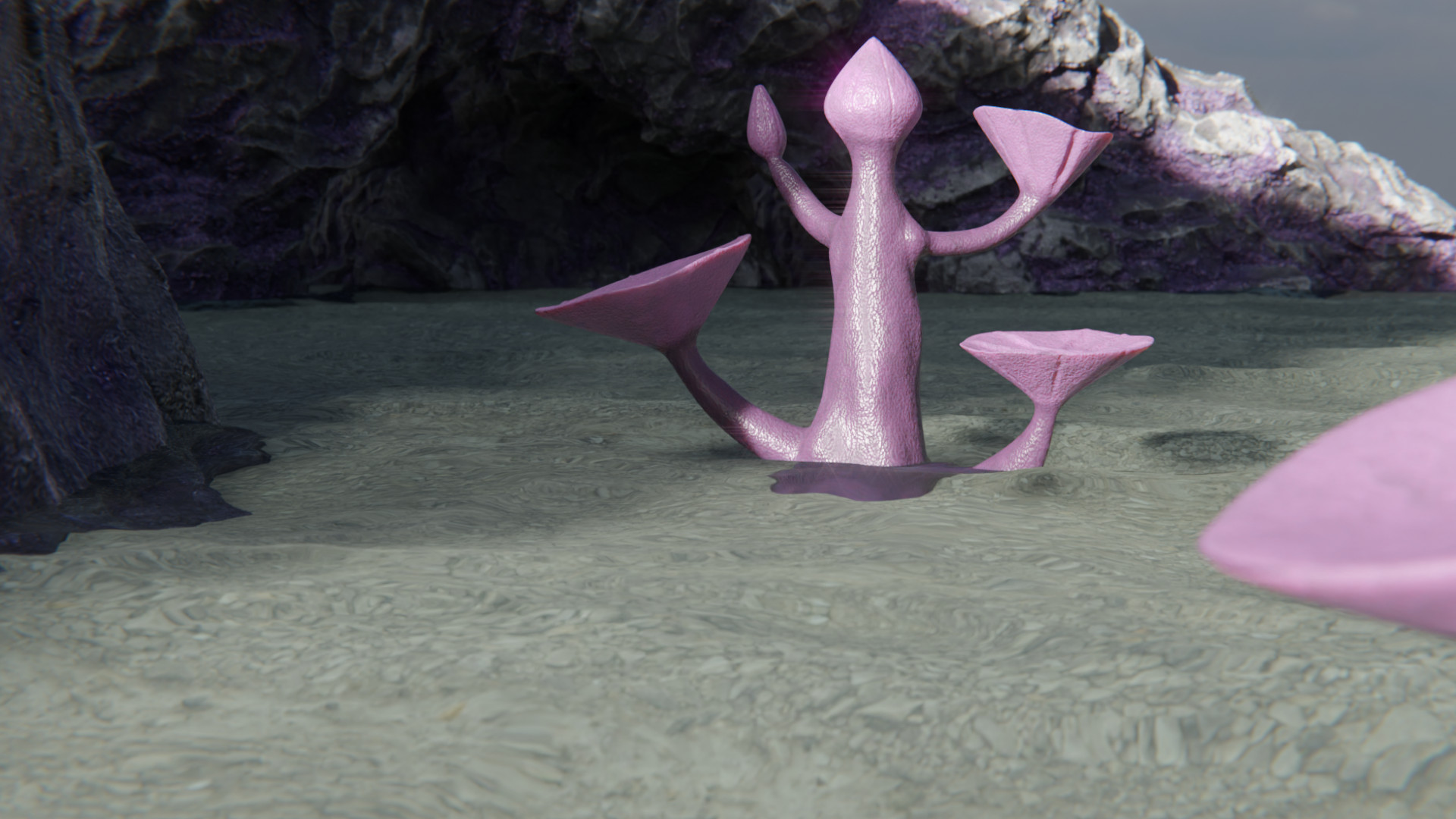Aquatuberus
Aquatuberus has evolved to live in wetlands, coastal regions, marshes and swamps. Here it has evolved to withstand the strong currents of the tides and the rise and fall of the water table. Because of these strange habitats it has evolved some strange features that aren't found in more stable habitats. It has evolved wide cone like leaves that catch water and nutrients when the tides drop and where it can catch water in dry times. It has a large tuber which acts as an anchor and stores nutrients and it reproduces by growing a hollow seed that can get carried away by the currents and easily settle in new habitats. [Creature Design by Kipzilla]
Basic Information
Anatomy
Aquatuberus is made up of 5 parts, The roots, The Tuber, The stem, the Leaves and the Head.
Roots: Aquatuberus has a large root system that has two purposes, They withstand the strong currents in tidal affected areas and they take in nutrients from the ground in which it is settled. They grow mostly wide and not very deep to gather as many nutrients as it can get in the poor soils in which it grows.
Tuber: The tuber is a large part of the plant and is where the plant grows from, it has two purposes: Storage of nutrients and weighing the plant down. Inside of the tuber is a hollow area that never fills with organic material, This hollow area is a leftover from seed where it grows from which uses the hollow area to increase buoyancy.
Stem: The stem is the hard connective part of the plant, it connects the tuber to the leaves and is rigid, inside the stem is a system where nutrients get transported through.
Leaves: The leaves are the main productive area of the plant, they are near the top of the water surface or stick out. They are septacons (7 sides) and are supported by small mid stems that grow in 7 directions and support the leaf. They are shaped in a wide cone which traps water and nutrients at high tide and catches sunlight at low tides.
The Head: The head is on the end of the stem, this is the area where the new seeds grow from. When the plant is not growing any seed then it serves no purpose
Genetics and Reproduction
Aqua boseo will grow a corm from its head when it's ready to reproduce, this corm or seed has the same genetic code as its parent plant.
When the parent plant is 4 months old and has leaves it will grow a head onto the stem which will allow for corms to grow, typically it has only one head where one corm at a time can grow from. But when the stems accidentally splits there is a small chance that multiple heads can grow.
The Corms are hollow on the inside to increase buoyancy which allow it to float and drift to other areas.
Growth Rate & Stages
At 4 months old an aquatuberus will grow a head which a corm grows from. When it's fully developed it will get loose and detach the moment the next flood or high tide rolls in, Then the corm will get taken away by sea and wind and settle down somewhere where the currents or winds aren't as strong.
When the corm is settled it sprouts roots from the bottom end which will keep it in place and the stem will grow from the top end. These will grow larger and larger and it will grow buds which will grow to around 10cm large and then fold open into its leaves. It will then grow to around 250cm long with leaves which are near the surface of the water sticking out far above the water.
After four months of growing it will develop a head in the middle of the stem and start making Corms for the next generation repeating the cycle
Ecology and Habitats
Aquatuberus grows in wetlands, swamps, marshes, intertidal zones, river mouths and deltas and in lowland areas with extreme amounts of rainfall (where their roots are 75% of the time submerged)
It grows and spreads around the world except for the colder regions where the frost will damage the plant.
Additional Information
Perception and Sensory Capabilities
Aquaboseo can sense droughts, When this happens it will let its leaves fall off and go into a drought hibernation. However the moment water returns it will go back to its normal life and regrow the fallen leaves.
EXTINCT
Genetic Ancestor(s)
Scientific Name
Karatabos aquatuberus
Origin/Ancestry
Retinalphyta
Lifespan
5 years, 10 in stable climates, only a few in unstable climates
Average Height
250cm
Average Length
Tuber is around 75cm wide
Geographic Distribution
Remove these ads. Join the Worldbuilders Guild











Comments